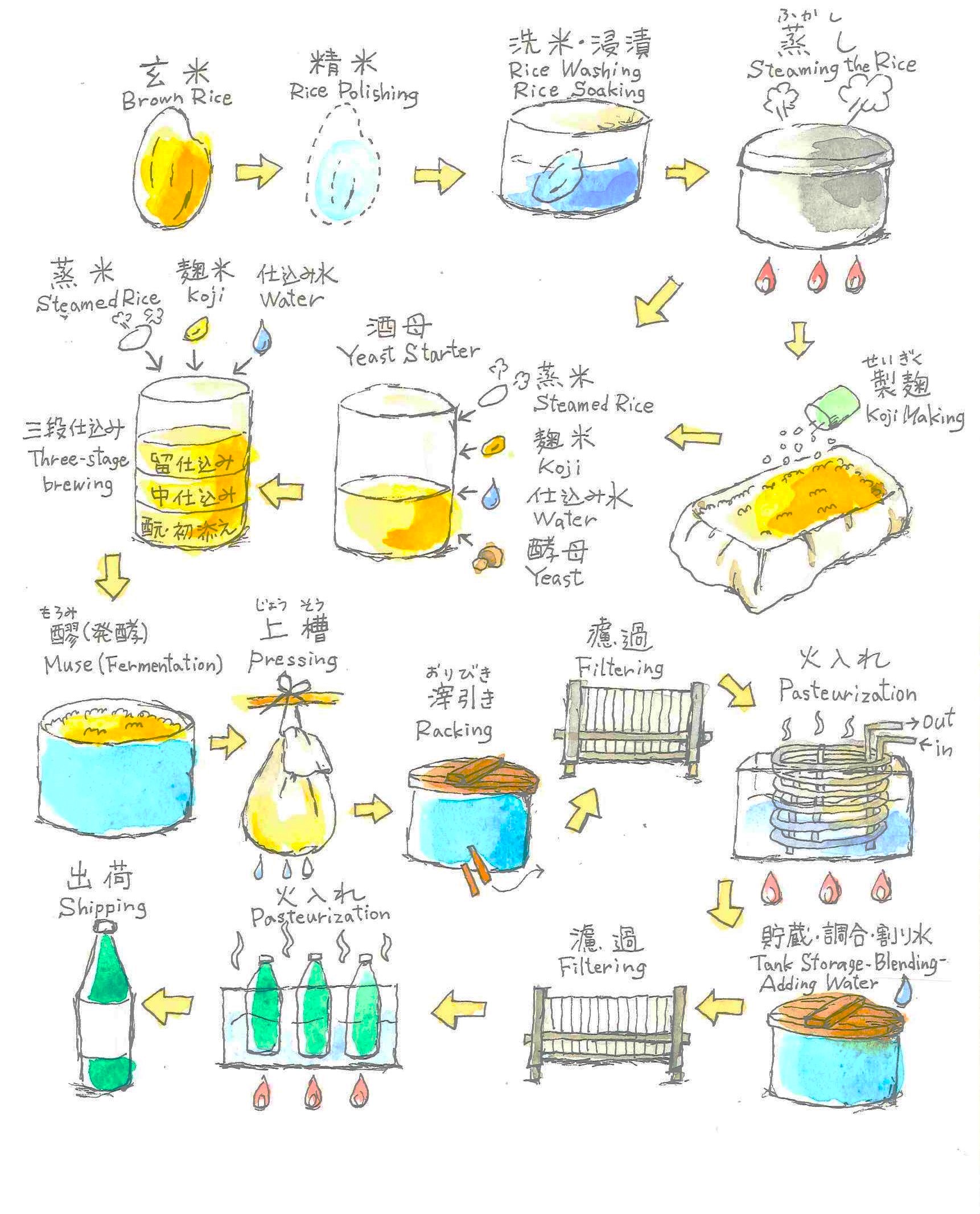Sake Resources
16 steps
This is the number of steps involved in making Sake!
Sake, a traditional Japanese rice wine, is made through a brewing process that involves four main ingredients: rice, water, yeast, and koji (a mold).
The quality and flavor of sake can vary greatly based on factors like the type of rice, water, yeast, and the skill of the brewers. Different brewing techniques and variations in ingredients lead to the wide variety of sake available, from dry and crisp to sweet and full-bodied.
Sake Discovery offers a very exclusive, behind-the-scene sake brewery tour you will not get in conventional brewery tours!
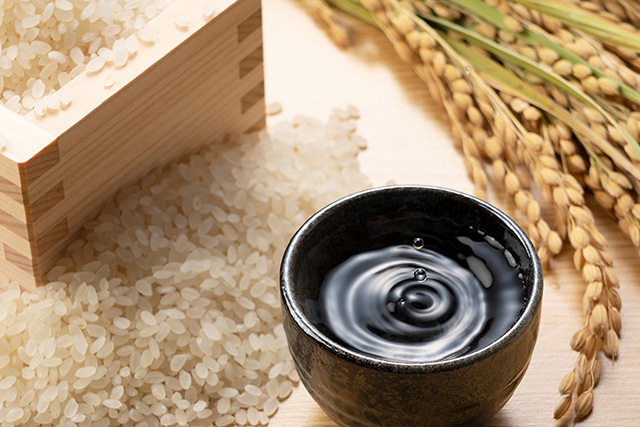
Sake Rice
酒 米
Sake rice is a specific type of rice cultivated and used in the production of sake, a traditional Japanese rice wine. Sake rice differs from regular table rice in terms of its size, starch content, and other characteristics that make it suitable for brewing sake.
Some well-known sake rice varieties, like Yamadanishiki, Gohyakumangoku, Omachi, and Miyamanishiki, are highly regarded for their specific attributes that contribute to the production of premium sake. The choice of sake rice can significantly impact the flavor, aroma, and characteristics of the final sake product.
■ Yamadanishiki (やまだにしき)
Yamadanishiki yields a delicate, smooth, deep, and rich flavor profile. Many breweries use it for brewing premium sake, often entered into sake competitions. Yamadanishiki is also suitable for aging.
■ Omachi (おまち)
Omachi is an ancient rice variety with a history of over 100 years. Many well-known rice varieties, including Yamadanishiki and Gohyakumangoku, have been developed based on the Omachi lineage. It is known for its low yield and is considered a high-quality sake rice. It offers a rich and mellow flavor with a delightful presence.
■ Gohyakumangoku (ごひゃくまんごく)
Gohyakumangoku is predominantly grown in the Hokuriku region. It produces a light and crisp type of sake with a sharp character, making it easy to brew.
■ Miyamanishiki (みやまにしき)
Miyamanishiki is a popular sake rice, ranking third in national production after Yamadanishiki and Gohyakumangoku. Sake made from Miyamanishiki features a subtle aroma, a smooth taste without strong aftertastes, and a refreshing drinking experience.
■ Aiyama (あいやま)
Known as the “diamond of sake rice,” Aiyama is a rare and highly valued rice variety. It has a robust umami flavor, richness, and well-defined acidity, resulting in high-quality sake with a unique, aromatic, and voluminous character.
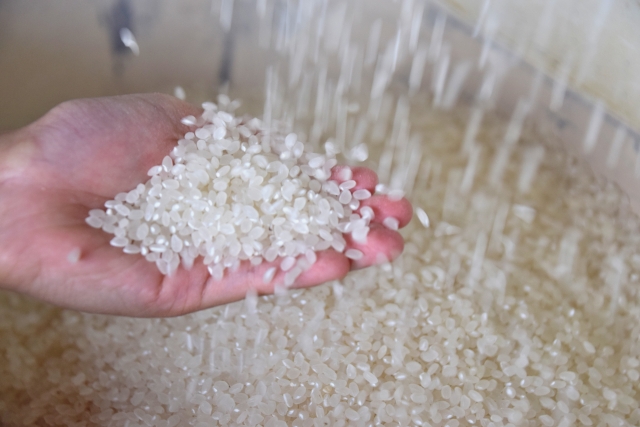
Rice Polishing
精 米
In the rice polishing process, unnecessary parts of the raw rice are removed for sake brewing. Nutrients such as fats and proteins on the outer surface of the rice are believed to contribute to the off-flavors in sake. It’s important to note that in this context, “off-flavors” don’t necessarily mean something bad.
The degree of rice polishing, indicated by the “seimai buai” (rice polishing ratio), refers to how much is removed. A lower seimai buai means more of the outer layers are polished away, leaving the starch-rich core. This is known to result in sake with a clean, refreshing taste and a delicate aroma.
The labels on sake bottles may include terms like “ginjo” or “junmai.” These are designations for specific types of sake that meet certain criteria, including the rice polishing ratio and the use of particular ingredients.
Rice polishing is a crucial step in sake production that significantly influences the quality and flavor characteristics of sake.
| Specific Designation | Brewing Aclohol | Ginjo Brewing | Rice Polishing Ratio |
| Junmai Daiginjo | Not used | ◯ | 50% or less |
| Daiginjo | Used | ◯ | 50% or less |
| Junmai Ginjo | Not used | ◯ | 60% or less |
| Ginjo | Used | ◯ | 60% or less |
| Special Junmai | Not used | - | 60% or less or special manufacturing method |
| Special Honjozo | Used | - | 60% or less or special manufacturing method |
| Junmai | Not used | - | - |
| Honjozo | Used | - | 70% or less |
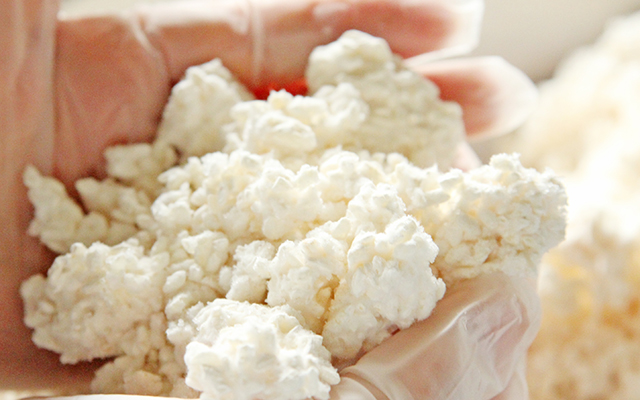
Koji Making
製 麹
Essential for making sake. It refers to the process of cultivating koji mold on steamed rice (koji rice) to create koji. The completed koji plays a crucial role in converting the starch in rice into sugar during the fermentation process of the moromi (mash). The yeast then consumes this sugar, producing alcohol, which eventually becomes sake.
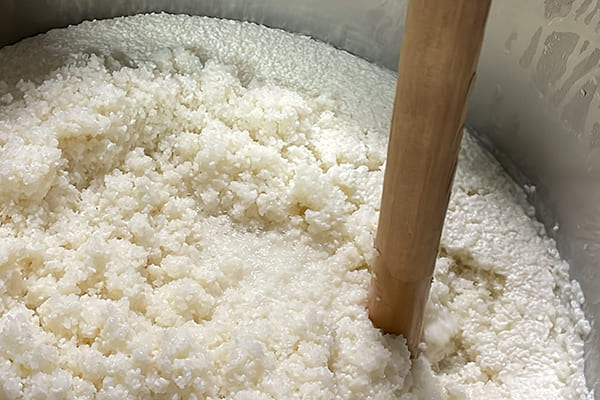
Shubo
酒 母
Yeast is a type of microorganism that plays a role in promoting alcohol fermentation. It is not only used in the production of sake but also widely utilized in the making of other alcoholic beverages such as beer, whiskey, wine, as well as in the production of miso, soy sauce, and cheese. The shubo is responsible for nurturing healthy yeast in large quantities and not only promoting alcohol fermentation but also significantly influencing the taste and aroma of sake. In recent years, the “ginjo yeast” has gained popularity for imparting a fruity ginjo aroma. Furthermore, the type and quantity of acids in the shubo can also alter the flavor, making the shubo preparation a critical factor in shaping the quality of sake.

Filtration
濾 過
There are two types of sake in terms of filtration: “filtered sake” and “unfiltered sake.”
Filtered Sake:
It is nearly colorless and transparent, with a refreshing and light mouthfeel. Often referred to as “tanrei karakuchi” for its light-drinking character. On the downside, it may lack the rich flavor found in freshly pressed, unfiltered sake.
Unfiltered Sake:
This type allows you to enjoy the sake’s original color and flavor, but it may contain more impurities. The influence of enzymes post-bottling can lead to changes in taste and aroma. It can mature in a favorable direction but also has the potential for degradation.
Authentic Sakagura tours with SAKE DISCOVERY
SAKE DISCOVERY CONCIERGE
You are interested in our tours, but you don’t know where to start?
We can help you!
Schedule conflict!
“My travel schedule is not compatible with the tour schedules. Is there a way to arrange a tour outside the regular schedule?”
Which tour should I go for?
“I would like to know which tour best fits my itinerary. ”
How do we get there?
“Based on our hotel location, can you guide us step by step on how to reach the brewery? ”

